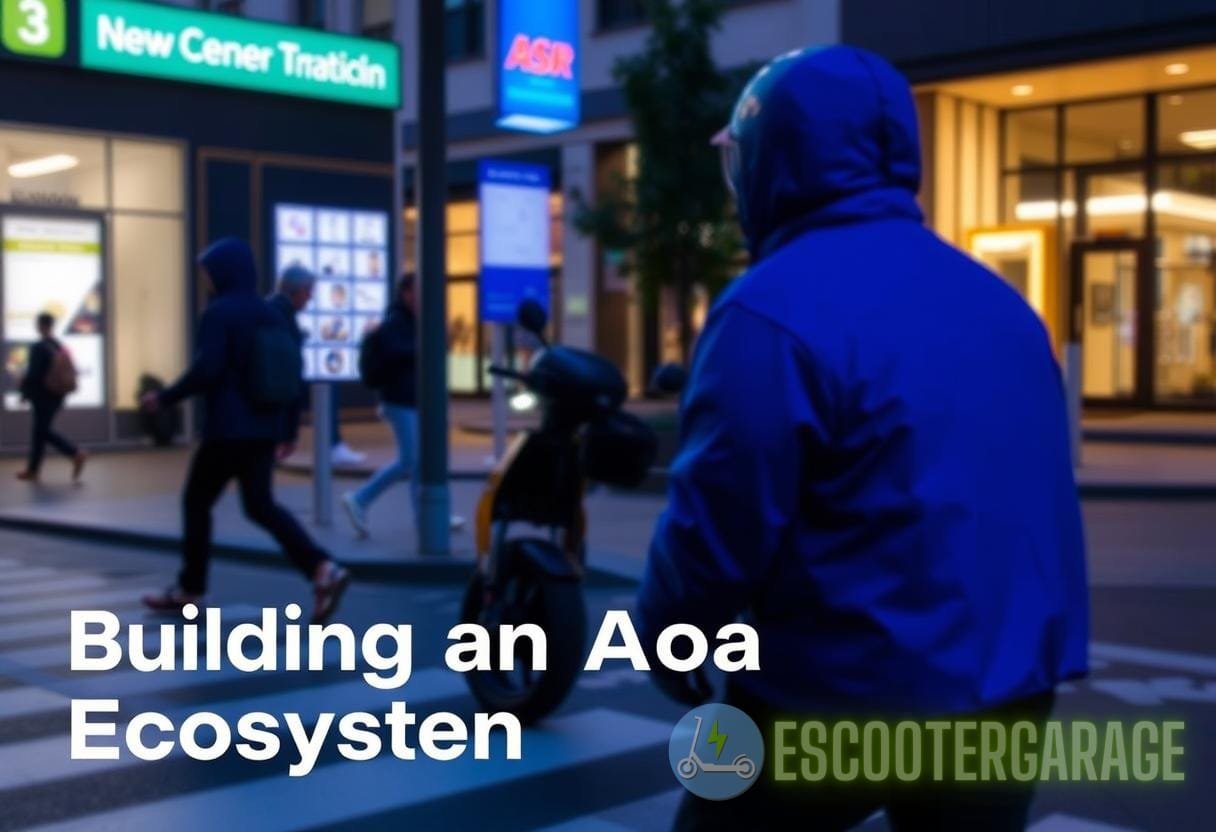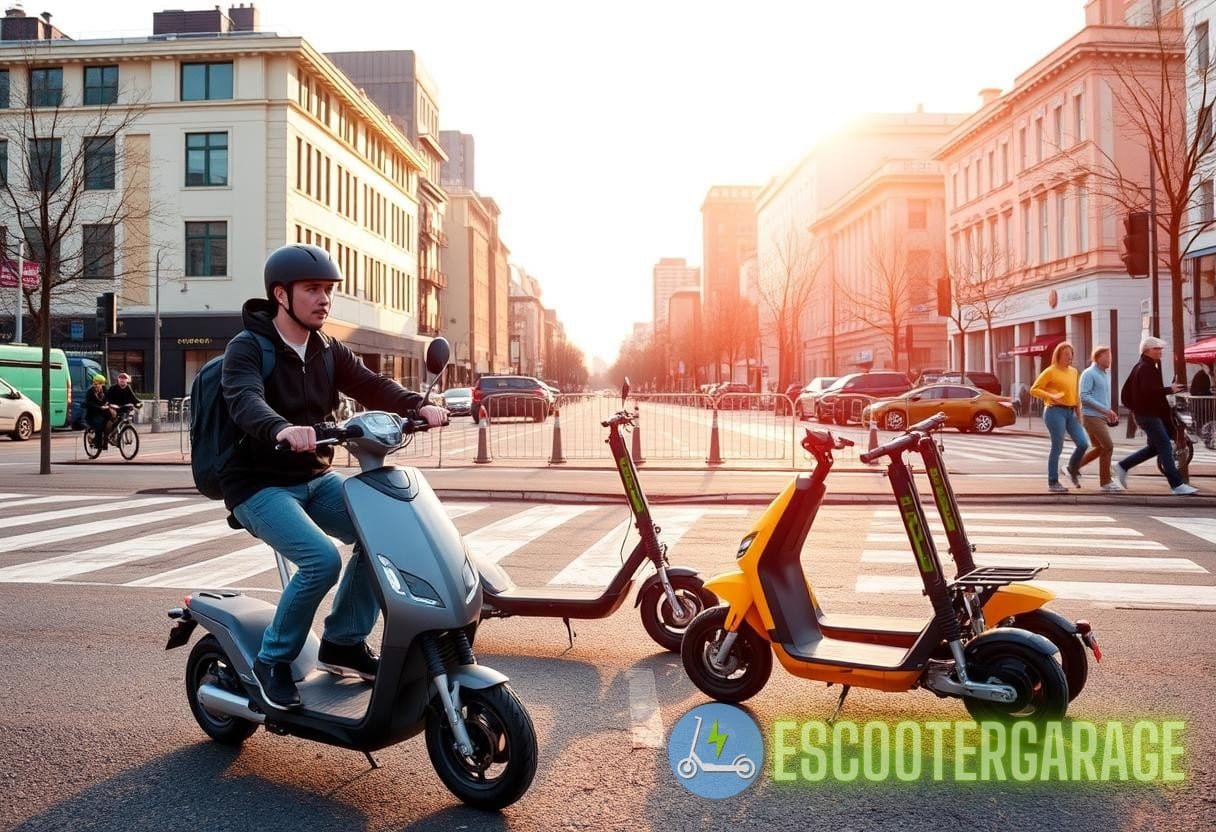Beyond Conventional Wisdom: Investigating the Role of User Behavior in eScooter Performance Optimization
The advent of eScooters has transformed urban mobility, enabling users to navigate city landscapes with unprecedented ease. However, the performance of eScooters is not merely a factor of their design and engineering; escooter user insights play a significant role. By understanding user behavior, manufacturers and cities can optimize performance, enhance user experience, and extend the longevity of these vehicles.
The Significance of User Behavior in eScooter Performance
Understanding user behavior is essential for improving eScooter efficiency. Research indicates that escooter user insights can inform the design and functionality of these vehicles in several ways:
- Usage Patterns: Daily commuting versus recreational use impacts the wear and tear on eScooters.
- User Weight: Heavier riders may experience reduced performance.
- Route Selection: Users opting for hilly areas may strain the motors more than those using flat terrains.
- Speed Preferences: Some users prefer faster speeds, potentially leading to overheating and battery drainage.
Incorporating escooter user insights into performance optimization can lead to enhanced designs and features tailored to user needs. For instance, eScooter manufacturers can invest in more powerful motors for users traversing steep inclines or higher-capacity batteries for long-distance commuters.
Common Performance Issues and User Behavior Impacts
Despite their advantages, eScooters are not immune to performance problems. Addressing these issues requires a thorough understanding of how user behavior impacts eScooter functionality:
- Battery Life: Analyzing how frequently and the conditions under which users charge their eScooters can highlight optimal battery management strategies.
- Tire Wear and Tear: User tendencies to ride over rocks, potholes, or curbs can accelerate tire degradation.
- Braking Efficiency: Frequent sharp braking by users may lead to quicker brake wear.
- General Maintenance: Consistency in maintenance routines among users can significantly impact eScooter longevity.
Data-Driven Solutions for Performance Enhancement
Utilizing data collected from eScooter usage can reveal trends that manufacturers and fleet operators can leverage to improve performance. This data can be gathered through GPS, app integrations, and remote monitoring to provide real-time insights into user habits and their consequences.
One noteworthy example is a study by the University of California, which found that escooter user insights can better predict operational challenges, thereby allowing for tailored maintenance rounds that reduce downtime. For instance, by analyzing common routes, technicians can proactively service eScooters deployed in high-use zones.
Real-World Case Studies
To illustrate the meaningful connection between escooter user insights and performance optimization, let us consider a few real-world case studies:
Case Study 1: Lime eScooters in San Francisco
In 2018, Lime eScooters were deployed in San Francisco. Through user data analysis, it was discovered that 70% of riders preferred to use the scooters during peak commuting hours. In response, Lime enhanced their charging infrastructure and operational hours based on demand patterns, which coincided with improved availability and a reduction in battery complaints.
Case Study 2: Bird and User Weight Analysis
Bird conducted a comprehensive study to understand the impact of user weight on their scooters. The analysis revealed that heavier users would deplete battery life by nearly 25% more than lighter riders. As a result, Bird implemented features allowing users to input weight estimates, which optimized battery consumption algorithms, improving performance for heavier riders.
Optimizing eScooter Performance through Design Adjustments
The relationship between user behavior and eScooter performance highlights a crucial area for manufacturers to consider: design adjustments. By listening to escooter user insights, manufacturers can innovate to improve performance metrics significantly:
Adjusting Performance Specifications
Features such as motor power and battery capacity can be tailored based on usage stats and user feedback. Elements like:
- Motor Power: eScooters equipped with higher wattage motors are better suited for heavy users and hilly topography, allowing for consistent performance.
- Battery Management Systems: Advanced battery management systems can optimize charge cycles based on user charging habits and usage patterns.
- Durability Testing: eScooter designs should include thorough testing under conditions reflective of actual user scenarios, thus ensuring reliability.

Building an Adaptive Ecosystem
Creating an adaptive ecosystem that incorporates user feedback can vastly improve the eScooter ownership experience. Platforms that provide users with reminders and tips on best practices based on escooter user insights can foster responsible usage, enhancing vehicle longevity.
Challenges of User Behavior Analysis
While analyzing user behavior provides multiple advantages, several challenges must be addressed:
Data Privacy Considerations
As technology evolves, gathering user data raises significant privacy concerns. Manufacturers must ensure that user data is anonymized and protected while leveraging insights drawn from this data responsibly.
Variability in User Behavior
Human behavior is inherently variable; factors such as weather, time of day, and even user mood can affect riding habits. Such fluctuations can introduce noise into the data analysis, complicating the extraction of reliable escooter user insights.
Adapting to User Feedback
Manufacturers must remain agile, promptly adapting their designs and operational strategies based on the changing preferences and behaviors of users. Continuous evolution of product design is essential to ensure long-term satisfaction and performance efficiency.
Quantifying the Economic and Environmental Impact
The optimization of eScooter performance has both economic and environmental implications. When users experience fewer performance issues, it translates into reduced costs for maintenance and operational downtime, beneficially impacting fleet operators:
- Lower Operational Costs: Efficiently functioning eScooters reduce the need for repairs and replacements.
- Improved User Satisfaction: Positive user experiences contribute to higher retention rates.
- Environmental Benefits: Enhanced performance leads to increased adoption rates, ultimately displacing more carbon-intensive transportation methods.
In a comprehensive study conducted by the Environmental Protection Agency, it was revealed that optimizing the operational aspect of eScooters could lead to a 20% reduction in emissions from urban commuting over the next decade.
Future Trends in eScooter Optimization
As the popularity of eScooters grows, numerous trends signal the future trajectory of performance optimization:
AI and Machine Learning Integration
With the rise of artificial intelligence, machine learning algorithms can analyze extensive user data to predict maintenance needs and enhance performance metrics dynamically. The combination of AI with escooter user insights represents a powerful tool for manufacturers looking to improve uptime and efficiency.
Smart Infrastructure Development
Cities worldwide are investing in smart infrastructure accommodations that can facilitate better eScooter integration. For instance, dedicated lanes and charging stations can mitigate hazards and provide user-friendly interfaces that optimally support user needs.
Customization Based on User Profiles
As user data becomes more accessible, eScooter manufacturers can offer tailored user experiences. Personalized settings based on user profiles—considering usage patterns, preferences, and behaviors—can refine performance, catering to diverse demographics.
By embedding advanced technologies and efficiently utilizing escooter user insights, the future of eScooter performance optimization looks promising. Manufacturers can thus continue paving the path towards a seamless and sustainable urban mobility solution.
Conclusion
The intricate relationship between escooter user insights and eScooter performance optimization is gaining recognition across industries. By embracing user data, manufacturers can evolve their offerings, creating sustainable, efficient, and user-centric urban mobility solutions. A concerted effort from all stakeholders involved will herald a new era of performance-driven eScooters, aligning with urban planning and sustainability initiatives worldwide.


